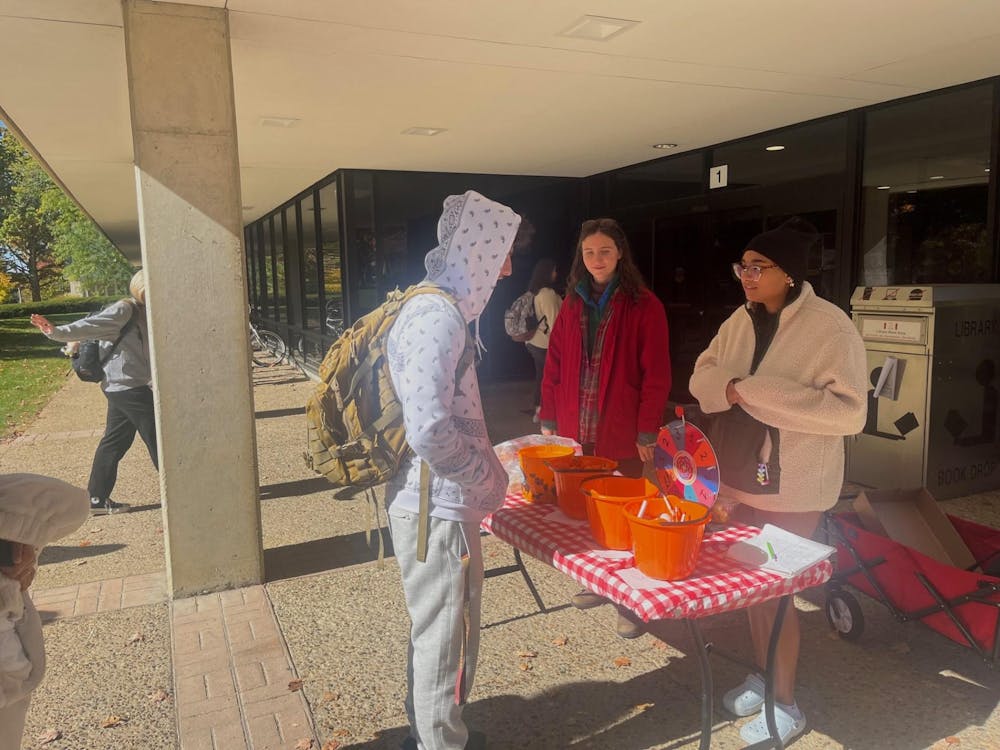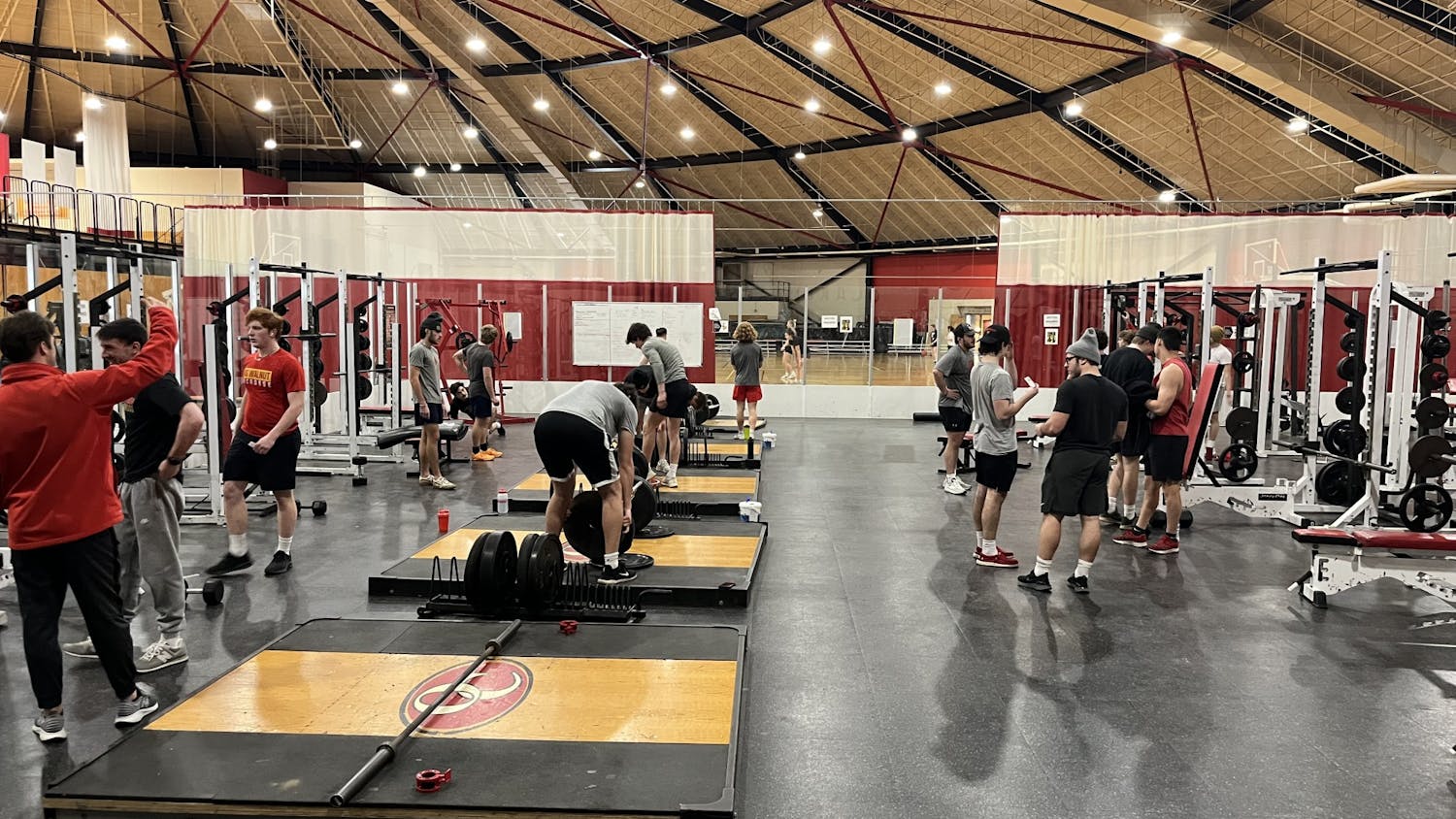Amanda Troyer enters the Promise House, Otterbein’s campus food pantry, looking for what every other college student has on their grocery list, food that can be made in a college dorm.
She looks for frozen meals, granola bars, mac and cheese, ramen, and other easy foods that can be stored in her dorm. Troyer is a junior at Otterbein, but she began using the pantry this past summer when she resided on campus while working a full-time job. The pantry became essential to her as a student who is fully responsible for buying her own groceries, which is a responsibility many other students face across college campuses.
The experience of food insecurity, defined as the lack of consistent access to food, is a reality for many college students in the U.S. In a 2020 survey conducted by Temple University's Hope Center for College, Community and Justice, researchers found that nearly 40% of students at four-year institutions experience food insecurity at some point during their college career.
With the rise of food insecurity among students, food pantries have become more prevalent on campuses. Research conducted by the College & University Food Bank Alliance noted that food pantries exist on over 700 college campuses across the United States, compared to the 88 that existed in 2012.
Although this is a vast increase, it doesn’t always mean students will be willing to utilize their local pantry. Troyer was initially hesitant to use the Promise House because she wasn’t sure that she met the qualifications to use their resources. It’s not uncommon for students to feel as though they aren’t struggling enough to use a food pantry.
Although the Promise House is a resource that many students find beneficial, a food pantry can’t always counteract the rising issue of food insecurity on campuses.
In 2021, the Promise House saw 214 individual shoppers. This means that of the 2,253 undergraduate students in 2021, only 9% of the student body were served that school year.
A deeper dive into food insecurity
According to the Food and Agriculture Organization (FAO), an individual is food insecure when they lack access to nutritious food to maintain an active and healthy life. Food insecurity may be due to unavailability of food or the lack of resources to obtain food.
Food insecurity can be experienced on different levels of severity, from having to skip an occasional meal to going a day or more without eating.
This inability to obtain food can be attributed to dorm hall life. Living in a dorm hall can constrain students to the meals they can create, especially with limited cooking resources. As a resident of Engle Hall this past summer, Troyer said that the dorm only had a community sink and fridge to utilize, limiting her to only having a microwave for cooking.
"I just use a microwave to cook food. It just makes it limited to what I can have, so I don't always want to eat frozen meals, but sometimes it's all I have the option to make," said Troyer.
A few other dorms on campus, including Dunlap King and Scott Hall, are often used for Summer housing and also feature these partial kitchens. For those living on campus during the summer with no access to a full kitchen, creating healthy meals can be difficult.
Living on campus over the summer also means no meal plans are available to students. With the dining hall closed for the summer, on-campus residents are expected to rely on themselves when it comes to finding food.
As a complex social problem, several factors contribute to the rise of food insecurity on a college campus. According to Feeding America, the rising cost of college tuition is a huge factor in this issue. Research from U.S. News & World Report shows that in 2004, the average cost of tuition at a private institution was $20,150, and in 2024, that number is rising to $46,652.
Correlation between food insecurity and academics
Starting in the 2023-24 academic year, Otterbein began providing all students who receive the Ohio College Opportunity Grant (OCOG) a financial package covering their tuition. Otterbein also has a Nurturing Educational Success & Transitions (NEST) program that works to integrate first-year students that are considered first generation, transfer, and/or students of color. In the 2020-21 academic year, 33% of Otterbein’s student population were Pell Grant recipients according to National Center for Education Statistics. Pell Grants are awarded to students whose families make between $30,000 to $60,000 annually.
Although Otterbein is providing opportunities to students, does help continue past recruitment when these students step on campus?
For international student, An Tran, having a car on campus during break has been crucial. It allows her to pick up food from the grocery store or go out to eat whenever she pleases. However, not all international students have this luxury, and when dining halls are closed during break, these students are left to fend for themselves. Tran describes what she thinks Otterbein could do to improve these conditions.
“I think having access to a kitchen with some basic cookware would be nice. I know that there are appliances such as air fryer and toaster oven available to use in the Promise House. However, those can only do so much, and they are only available during their hours. I think having some kind of grocery or food delivery services on an order basis would be very helpful to some of the students who do not have access to a car,” said Tran.
When students experience this inconsistency in food availability, it can bleed into other aspects of their lives.
In a 2020 study from Food Insecurity Among College Students, researchers looked at the correlation between academic outcomes and food insecurity. The results showed that of the students who reported housing or hunger problems, 32% reported these problems having a negative impact on their education. Also, 55% reported not purchasing textbooks, 53% missing classes and 25% dropping a class due to food or housing related issues.
This burden can also lead to academic issues. According to a 2019 article, University Student Food Insecurity and Academic Performance, “Food insecurity increased the odds of being among the lower 10% GPA and reduced the odds of being among the upper 10% GPA."
Future steps to ending food insecurity
As for most issues, effective change is mainly made at the government level, which many organizations are pushing for when it comes to food insecurity relief.
In 2020, Congress passed provisions which made obtaining SNAP benefits easier for college students. This assistance helped many low income or no income college students obtain healthy food. However, these benefits just recently wore off in June 2023, making food insecurity an even bigger struggle for students.
In May 2021, two bills were introduced that aimed at helping food insecurity and hunger on college campuses. One bill was aimed at the Senate (S 1569 Student Food Security Act of 2021), and one at the House (HR 1919 EATS Act of 2021). These bills were backed by organizations such as the Center for Law and Social Policy, Feeding America, and Hope Center for College, Community, and Justice. The Bills not only called for SNAP expansion, but would also require the establishment of grant programs on campuses that students could apply for and benefit from. Currently, neither bill has made it out of their respective committees in Congress.
Although change at the government level won’t happen instantly, leaders on campus are working at a smaller scale to educate students on food insecurity and how to use the resources at their disposal.
Nadia Timperman is an Otterbein professor in the Health & Sport Science Dept. as well as a registered dietitian. Timperman believes the rising issue of food insecurity is at least causing more people to bring the issue to light.
“I feel food insecurity has always been an issue for college students. It's something we just dealt with in the shadows of the college experience,” said Timperman. “People are willing to talk about it more and are willing to try and make changes, implement programs and come up with solutions for the issue of being food insecure.
Timperman teaches PUBH 1500: Public Health Nutrition & Sustainability, which is a course focused on creating nutritious foods from limited resources. A main project in the class is for students to survey the Promise House inventory and create or find a recipe that utilizing mostly Promise House ingredients with a limited budget of less than $5 for their meal. Students are required to cook the meal and share it with the class, and the recipe needs to meet U.S. Dietary Guidelines and follow MyPlate recommendations.
“As a dietitian, I strongly believe that we struggle with nutrition-related health complications as a result of our lack of cooking and meal prep. Data support this. Frankly, it doesn't matter whether you're food secure or not. The skill is just that much more important if you're food insecure as you'll need to get creative and with recipes,” said Timperman.
Even though these practices don’t fix the issue of food insecurity, they provide students with the knowledge needed to create meals that are cheap, but still supply their body with necessary nutrition. So, while students wait for assistance from institutional authority to resolve this ever-growing problem, they can utilize their local food pantry to expand their diet beyond instant ramen and frozen pizza.








